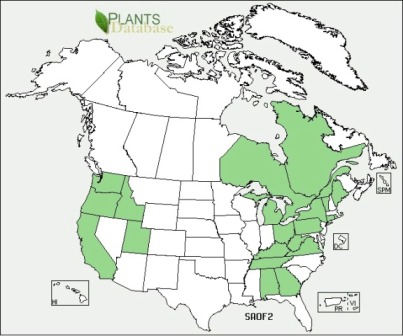
Habitat

Sage is a desert herb that is native to the Mediterranean (southern) region of Europe and northern Africa. It is also found in some regions of the United States as shown in the picture on the right. It is a plant that requires a large amount of sun and can be commonly found near limestone and in places where the soil is shallow, dry, and rocky. Since sage has adapted to dry conditions, if the soil becomes too wet, the roots will become saturated and prolonged wetness will lead to root rot and plant death. Because of sage's dry habitat it doesn't grow to be very tall and is typically 1.5 to 2.5 feet tall. Though it is native to the Mediterranean and Africa, it can also be found in regions of North America and South America. Aside from its natural habitat, people cultivate sage all over the world in order to harvest it for its medicinal and cooking purposes.
 Wild sage can take on a different appearance than cultivated
sage. Wild sage will have a stronger odor and will bring more flavor
than cultivated sage. One thing to remember is that sage has adapted to dry conditions, so if you are thinking about
growing some yourself don't over water it! As seen in the picture
below it can grow in rough, dry, and rocky conditions.
Wild sage can take on a different appearance than cultivated
sage. Wild sage will have a stronger odor and will bring more flavor
than cultivated sage. One thing to remember is that sage has adapted to dry conditions, so if you are thinking about
growing some yourself don't over water it! As seen in the picture
below it can grow in rough, dry, and rocky conditions.
To compare habitats with other organisms, check out Garden Ginger.
To see more on how Sage adapts to its environment, continue to Adaptations.
To explore the habitats of other awesome organisms, check out the Multiple Organisms web page.